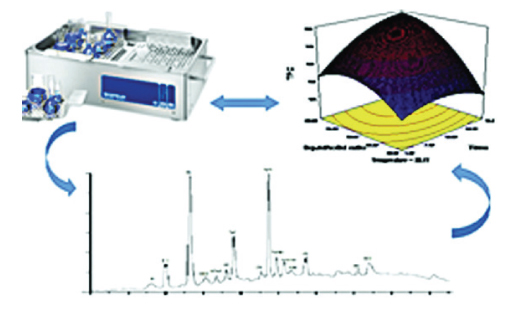Optimization of ultrasound-assisted extraction of phenols from seeds of grape pomace
Keywords:
grape pomace seeds, ultrasound assisted extraction, phenolic compounds, radical scavenging activity, response surface methodologyAbstract
The aim of this research was to optimize extraction condition of ultrasound-assisted extraction (UAE) of phenols from red grape Vranac variety (Vitis vinifera L.) pomace seeds. The minimum experiments needed as adequate responses for optimization of UAE by response surface methodology (RSM) were obtained by spectrophotometric and HPLC analyses of seed extracts. UAE greatly depends on three independent variables: extraction temperature, time and liquid/solid ratio. The RSM can be used for optimization of UAE conditions to obtain maximum responses such as extraction yield, TPC, (+)-catechin, (-)-epicatechin and proanthocyanidin content. The predicted values of model are in accordance with experimental data under same conditions. Experimental data also confirmed that UAE gives better yield of phenolics than conventional solvent extraction. The UAE under optimal extraction conditions is suitable for obtaining extracts that are rich in phenolic content and strong antioxidant activity which could be used as additives in food and medicaments.

Downloads
Additional Files
Published
Issue
Section
License
Except where otherwise noted, articles in this journal are published under the Creative Commons Attribution 4.0 International License
